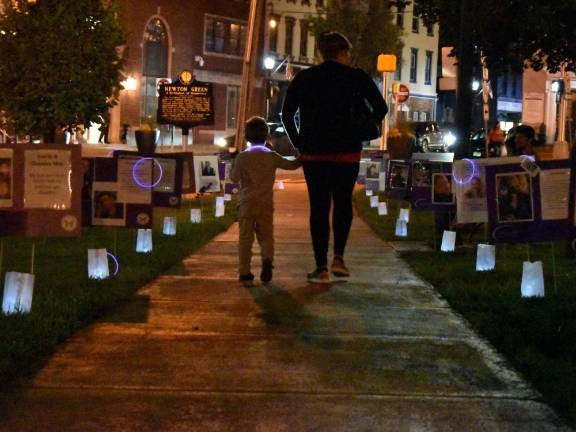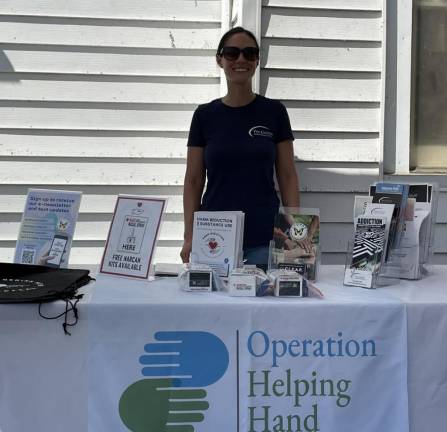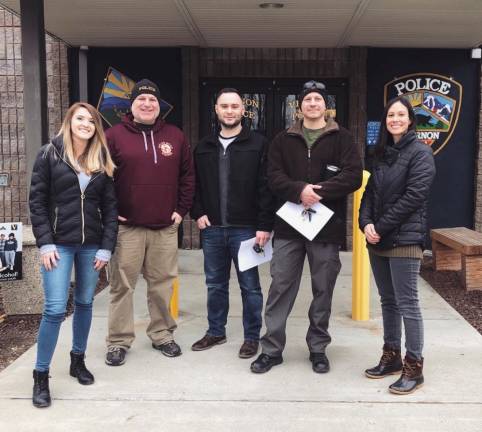Overdose deaths tail off, even as addiction rages on
‘If we didn’t have Narcan those numbers would be a lot, a lot higher’



As fentanyl continues to cut its deadly swath through American communities, a tailing number of deaths by overdose represents a “glimmer of hope there in this otherwise tragic epidemic,” said a New Jersey state police captain.
New Jersey’s 2,893 overdose fatalities last year were the fewest the state has seen since 2017, according to data from the chief state medical examiner’s office.
The dip in fatal overdoses – while encouraging – does not mean drug itself use is letting up, say those on the front lines. Based on demand for their services, Annmarie Shafer, director of recovery support services at the Center for Prevention & Counseling, said people appear to be self-medicating their stress as much as ever. “We’re in an addiction epidemic – alcohol is probably leading that addiction epidemic, but people are medicating themselves and stress is a big factor.”
“I think awareness about it is increasing,” Shaffer added, “helping people understand, there’s services, there’s help, and you’re not going to get in trouble if you bring that to the forefront, and you’re not going to be stigmatized.”
That sea change in awareness has come with robust government funding for an all-hands-on-deck approach, including “upstream” education in schools, one-on-one recovery coaching, law enforcement training and, critically, harm reduction strategies like the wide distribution of naloxone, the overdose reversal medication; and fentanyl strips, a newly legal drug-testing tool most recently decriminalized in Pennsylvania in early January.
The complete picture of 2022 is not yet available nationwide, but the most recent data from the Centers for Disease Control and Prevention, updated Jan. 1., show that as of this summer, the downtrend was happening nationwide. Fatal overdoses peaked in March after a steep pandemic-era climb, then the curve rounded and began to tail off for the first time in nearly three years. Between March and August, the American overdose death toll declined steadily, dipping 2.6 percent from the epidemic’s height.
The most prominent decrease was on the top line: deaths related to synthetic opioids.
The numbers in Pennsylvania
By August, fatalities in hard-hit Pennsylvania had declined 6.5 percent from their height 10 months earlier, to 5,178 deaths over a 12-month period. New York’s August overdose count had fallen 2.8 percent from its worst point in December 2021, to 3,276 deaths over a 12-month period, according to the latest CDC data. In a few states, like Maine, North Dakota and Vermont, the numbers were still headed sharply up.
There is a lesson in caution to be taken from 2018. That year saw a four percent drop in overdose deaths, along with much back-patting and celebration – before we headed into the teeth of the opioid epidemic.
Narcan
The single biggest lifesaver in the short term is widely agreed to be the ready availability of naloxone, commonly called Narcan. “If we didn’t have Narcan those numbers would be a lot, a lot higher,” said Katie Walker, recovery specialist at the Center for Prevention.
Available as a nasal spray, the overdose antidote blocks the effects of opiates in the brain and restores normal breathing. It’s for sale at pharmacies for about $75 per two-dose box with a prescription, but it is often handed out free.
Naloxone is now a stock item in school nurses’ offices and college dorms. In New Jersey, high schools are required to have a supply on-hand; Pennsylvania is considering a similar mandate.
Other community gathering spots like libraries have begun carrying the overdose antidote.
“Pre-Covid, the staff was trained in Narcan and had received some doses through the training, but they have since expired and we have not replaced it,” said Rose Chiocchi, director of the Pike County Public Library. “Thankfully, we’ve never had to use it here in the library. We have not seen the need. We’re also trained in CPR and basic first aid on a regular basis.”
Drug check
In the controversial field of harm reduction, fentanyl strips – used to “drug-check” whether a street drug is contaminated with uber-potent fentanyl – remain a particularly hot topic. Much like a pregnancy or Covid test, the paper strip is dipped in water mixed with drug residue, revealing whether the substance contains fentanyl.
Critics say the strips endorse drug use by giving users the green light if the supply is fentanyl-free, and they have come to symbolize the national rift over how to combat the drug epidemic.
These days, fentanyl is found not only in the vast majority of heroin samples, but also in counterfeit pharmaceutical drugs and even in stimulants like cocaine or methamphetamine, according to the CDC.
“Somebody might get what they think is a Xanax bar from somebody off the street and it’s really not a Xanax, it’s just fentanyl pressed into the shape of a Xanax,” said Walker, the recovery specialist at the Center for Prevention. “So if somebody knew that’s what it was, maybe they wouldn’t use it, or they would use it differently than if they thought it was a real Xanax. They’re really known to change people’s substance use behavior. Usually people will use less at once.”
‘We’re not sure yet what this is going to look like’
With their decriminalization in Pennsylvania in early January, fentanyl test strips became legal across the tristate region, though whether they are accessible is another question.
“Of course they legalize it, and then we have to wait and see: is there going to be funding initiatives with that?” said Shannon Wisniewski, Milford outpatient supervisor for the Carbon-Monroe-Pike Drug and Alcohol Commission, which had no immediate plans to provide fentanyl test strips.
“We’re not sure yet what this is going to look like,” Wisniewski added. “Obviously we’re an outpatient and we try to get people to focus on the abstinence side of the program.
But on the case management side of course we want people to stay alive, and you know, if we need to teach harm reduction in that process, we have to look at what’s going to benefit that person.”
Wisniewsi added that 9-1-1 calls for drug overdoses in Pike County were still headed up, as they have been for the last few years. She was still waiting on the coroner’s numbers for 2022, she said.
More opportunities to get help
“We’re dealing with the most powerful, potent drugs that mankind has ever faced,” Walker said. “People have been doing drugs since the beginning of time, but people weren’t dying at the rates that they’re dying now.”
Between the internet, which makes it easy for anyone to score drugs without leaving home; and payment alternatives like bitcoin that confound enforcement, access has never been easier.
“In the 80s you weren’t ordering something off the internet and having it come to your house,” Walker said. “We’re combatting a lot of things now that we’ve never faced before, so if the numbers are coming down – like, at all – it is really significant.”
Walker is in recovery from to substance use herself, having lost her best friend to an overdose in 2010. At the time, Walker had begun addiction treatment and the two had lost touch. “She was just left there.”
Today, Walker believes her best friend’s story might well have turned out differently.
“You always think about, would they still be there if this was available when they were struggling?” she said. “I think she could have had a lot of opportunities to get connected to help way before that, you know, that last overdose.”